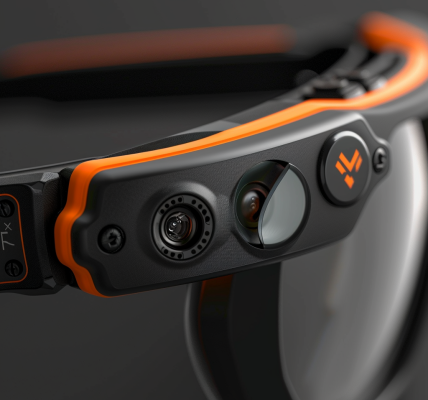Apple is currently evaluating the application of color filters for the OLED panels in its upcoming budget mixed-reality (MR) device, according to insider sources. The tech giant is weighing two potential methods for integrating the color filter into the display technology that will be used in its more affordable Vision Pro model.
The unnamed device is expected to feature a panel constructed on a glass substrate, where white OLED layers are deposited. A red, green, and blue (RGB) color filter will then be placed on top of these layers, a method referred to as W-OLED+CF. This approach is distinctive as it contrasts with the OLED on silicon (OLEDoS) technology used in the original Vision Pro, which boasts a significantly higher resolution of 3,391 pixels per inch (ppi) and is supplied by Sony.
For the new budget device, Apple is contemplating a resolution of approximately 1,500 ppi. The company is leaning towards a method that involves directly applying the color filter onto the thin-film encapsulation (TFE) that protects the panel. This technique is designed to streamline the manufacturing process by reducing the number of glass layers required, thereby allowing for a thinner device profile.
In contrast, the more traditional method involves placing the color filter on a separate glass board, which would then be combined with another glass board that has the W-OLED layer. In this scenario, the W-OLED glass board serves as the base, while the color filter board is positioned on top.
Apple’s preference for the direct formation of the color filter on the TFE is driven by its potential to minimize the device’s thickness. However, this method poses challenges, as it necessitates a low-temperature process to prevent damage to the OLED layers. This complexity is similar to techniques employed by Samsung in its foldable smartphones, where the company utilizes a method known as color filter on encapsulation (CoE).
The ambitious resolution of 1,500 ppi will require the color filters to be densely packed, presenting additional manufacturing challenges and potential cost implications. For comparison, Samsung’s Galaxy Z Fold 6 features an inner panel resolution of 374 ppi, highlighting the significant difference in density that Apple is aiming for with its MR device.
To bring its vision to fruition, Apple is expected to collaborate with Samsung Display, which has been at the forefront of investing in the W-OLED+CF technology. Samsung Display is preparing to install research equipment developed by Sunic System at its A3 facility, which will facilitate the development of the desired display panels for Apple’s new device.
This strategic move underscores Apple’s commitment to enhancing its product lineup with cutting-edge display technology while also making strides in cost-effective manufacturing processes. As the competition in the mixed-reality space intensifies, the decisions made regarding the display technology will play a crucial role in shaping the user experience and overall market reception of Apple’s budget MR device.
As Apple continues to innovate and refine its approach to mixed-reality technology, industry observers will be keenly watching how these developments unfold and their implications for the broader market landscape.





